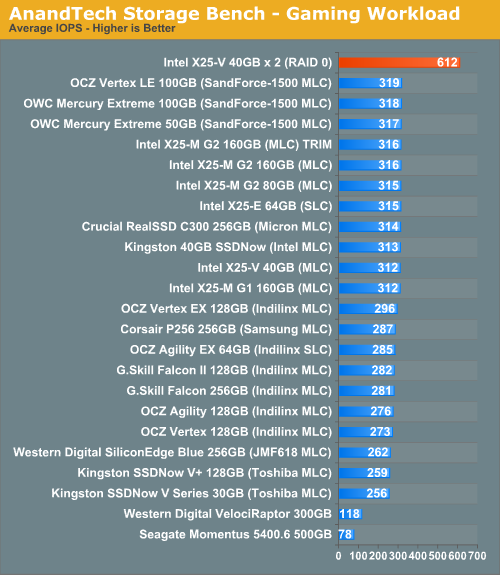This is with Write Cache enabled in Intel RAID and Windows Write Back Caching. What controller does is write combining and writing sequential blocks versus random. Cache is not huge on C300, I believe it's 128/256MB. So it's not purely cache testing.
Ao1, feel free to step in here buddy.
Here's what it means: For sample of games tested, read operations are mostly dealing with 4KB files sizes. See below.
Overall this is I think is the best summary that shows weights by transfer size and QD depth:
72% of 4K random, and 85% of QD1 operations is what is the most important. This was constructed based on information from JEDEC as well as testing and observations of real applications usage by Ao1, Anvil, Tilt and others.
Interestingly in this article http://www.anandtech.com/show/3618/i...m-g2-for-250/5 Anand says:
But this is a benchmark and I'm not sure what he means "The average queue depth is 7.76 IOs"? QD7? Also would be nice to see loading times. As lowfat and One_Hertz will confirm even ioDrive and ioXtreme do not help game loading times over single X25-M. Anything better than that is bottlenecked by CPU.The gaming workload is made up of 75,206 read operations and only 4,592 write operations. Only 20% of the accesses are 4KB in size, nearly 40% are 64KB and 20% are 32KB. A whopping 69% of the IOs are sequential, meaning this is predominantly a sequential read benchmark. The average queue depth is 7.76 IOs.









 Reply With Quote
Reply With Quote

Bookmarks